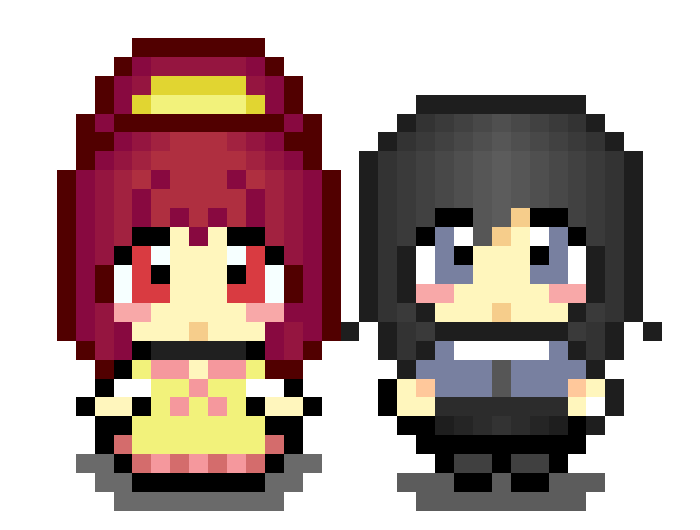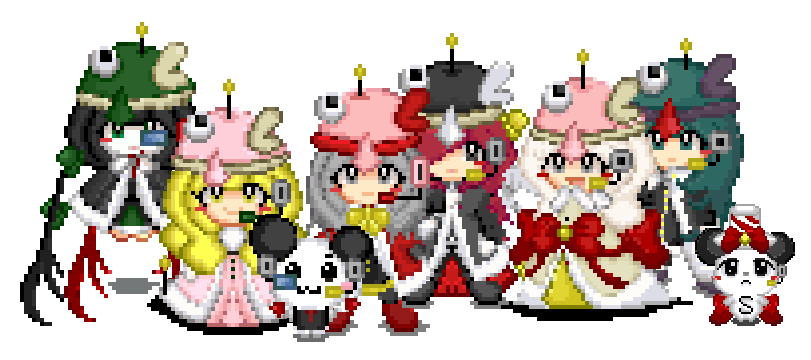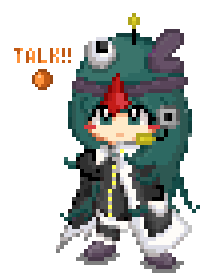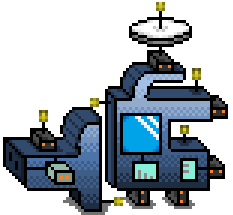Towelket 2
During the past year and this one, I set the goal of replaying every Towelket game there is. And this game, I knew it was going to be one of the highlights of the whole deal.
I love Towelket 2. It's definitely one of my favorite RPGMaker games ever. But the last time I played it was back in 2022. So, the question was obvious:
Does it still hold up?
Yeah, it does. Of course it does.
The very first two hours of this game are simply amazing.
I just love the way we get to know our protagonists, their lives, their families, and the town community before being thrown into the "main" plot. It's incredibly effective at making you feel attached to everyone.
Speaking of this, multiple meaningful events happen during the village introduction, and every time something new occurs, everyone's dialogue updates. It makes the town feel alive in a way that most future Towelket games can't quite replicate.
Everyone is charming. Everyone knows each other. And anyone's problem is everyone’s problem. Kanao did a fantastic job capturing the feeling of a tightly knit rural community.
Now, about Mocchi and Paripariume (PPU), our protagonists.
Mocchi is silent, but not unfeeling. You can still tell what he cares about. He's just a kid with simple wants and needs, and he loves his cow. While I do prefer a talking protagonist, I think making Mocchi silent was the right decision. It fits the narrative and makes certain later scenes much more impactful.
Now PPU, she is very talkative, which creates a nice contrast with Mocchi. PPU is an amazing character overall, and still one of the most compelling in Towelket’s history. She is kind, funny, brave, and incredibly resilient. She is definitely the character you’ll feel the most attached to. Every scene she’s in will catch your attention in one way or another. She feels like the most human character in the game.
They’re both just two kids living a peaceful life in the countryside, and I think Kanao does a great job portraying them that way.
Finally, there’s Cow-chan, Mocchi’s beloved cow. She becomes the catalyst for everything. While Kanao could have made her just a joke character, they instead made her genuinely interesting. She’s a really good, well, “person” who loves Mocchi deeply and wants the best for him. And yet, throughout the game, she carries this air of sadness and a sense of longing, with a hint of jealousy that she tries to hide. If you play the game, you’ll understand why. But all of these emotions make her feel surprisingly “human” for a cow.
At the beginning of the game, the village is just a happy little town, but things slowly begin to feel off. UFOs appear on the horizon. Cow-chan disappears. And so on... one thing after the other, little by little uneasiness accumulates, and you can just feel something is about to go wrong.
Then comes that part. In less than ten minutes, everything comes crashing down. So fast, one scene after another. Things get so much worse for Mocchi and PPU, who suffer in ways that left me just staring at the screen, trying to process what had just happened.
And from this point on, things will only get worse for everyone.
I wish I could talk more about what happens in this act, but honestly, it would be cruel to spoil anything that comes next.
After this extremely compelling introduction to the world of Towelket 2, it’s a bit of a letdown how much the pacing slows down during the middle act. In the previous act, events happened one after another, and you never felt like the game was dragging. That’s why it becomes very noticeable when the game starts introducing these long, drawn-out sections just to get from point A to point B.
The abandoned train station comes to mind immediately, a section so long it’ll have you thinking, “please just end already.” The lack of dialogue or character interaction in many of these areas doesn’t help; it just makes them feel even more lifeless.
Another issue is the references to the previous game, Towelket 3. While they seem cute and harmless at first, they really start to overstay their welcome. The worst offender comes near the end of the game, a location so out of place, both in tone and context, that it completely takes you out of the experience. It makes you stop and wonder, "what is even going on? And what’s the point of this right now?".
That said, this act still contains important revelations and plot-relevant moments, so I wouldn’t call it bad by any means. But it is the weakest part of the game, and honestly, a lot of the dungeons could’ve been cut without losing much.
That brings us to the final act of Towelket 2, and it’s probably one of the best things I’ve ever experienced in a video game. It does everything right, and then some. It’s something I’ll remember for a very long time.
I wish I could be more specific, but this is truly something that should be experienced firsthand, not read about in a review, and definitely not watched in a playthrough. Towelket 2's battle system is standard for any RPGMaker game, really. You attack and sometimes use a skill or an item. There’s no real complexity, and it doesn’t need it. Battles serve their purpose of being obstacles for adventure. They’re fast paced, and the difficulty is quite low, but not so low that you can just spam the attack button without thinking. Towelket also places enemies on the overworld, so you can choose which ones to battle outside of mandatory boss fights.
Regarding the gameplay, one of the first things you will notice about this game is this stylish little menu. The options “Menu” and “END” are self-explanatory, while the other 3 show how much passion and care went into this game.
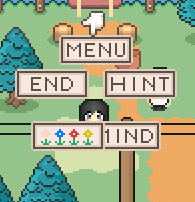
The flower field option takes you to a field where you can plant flowers you’ll find on your adventure. They provide various status boosts, and while you probably won’t need them, the music and the calm of this map are worth visiting a couple of times.
The hint menu takes you to a bar with the unique NPC, Elizabeth. She’s apparently a married woman who gives away free hints to the player. She’s a very fun character who, while she may make fun of you sometimes for being bad at video games, always offers helpful advice and tips on how to progress the story. It’s a bit impressive how many lines she has, Kanao really puts a lot of care into actually helping the player at any point in the story, while delivering this help in a way that blends perfectly with the world of Towelket.
The last menu is the most important of them all: the Mind. Introduced in this game, it became one of Towelket’s signature gameplay elements. Inside the Mind, you can revisit memories and rest. Each time something important happens in the story, a new memory spawns inside the Mind. Interacting with it usually gives you items or stat boosts, but it can also reveal Mocchi’s thoughts about certain things. Here, you can also cook and make healing items to make battles easier. You can buy furniture and companions to make the Mind feel even more alive. The Mind is a central aspect of this game, and I suggest taking a break inside it when things get too dark, the contrast really helps enhance the overall experience. This game is probably the one where the Mind is used most effectively.
Regarding the music, Towelket's soundtrack is mostly made up of MIDI versions of public domain music. This isn’t a bad thing at all, the music box instrumentation and the precisely hand-picked tracks really enhance many scenes. You can tell Kanao spent a long time deciding where each track should be used.
With all that said, I can’t recommend or praise Towelket 2 enough. It’s such an amazing game with an incredible story that it’s hard to believe it was made so early in Towelket’s lifespan. This game really shows Kanao’s capacity to write compelling stories with characters that feel human, while still being able to blend in the kind of humor Towelket is known for without it ever feeling distasteful.
